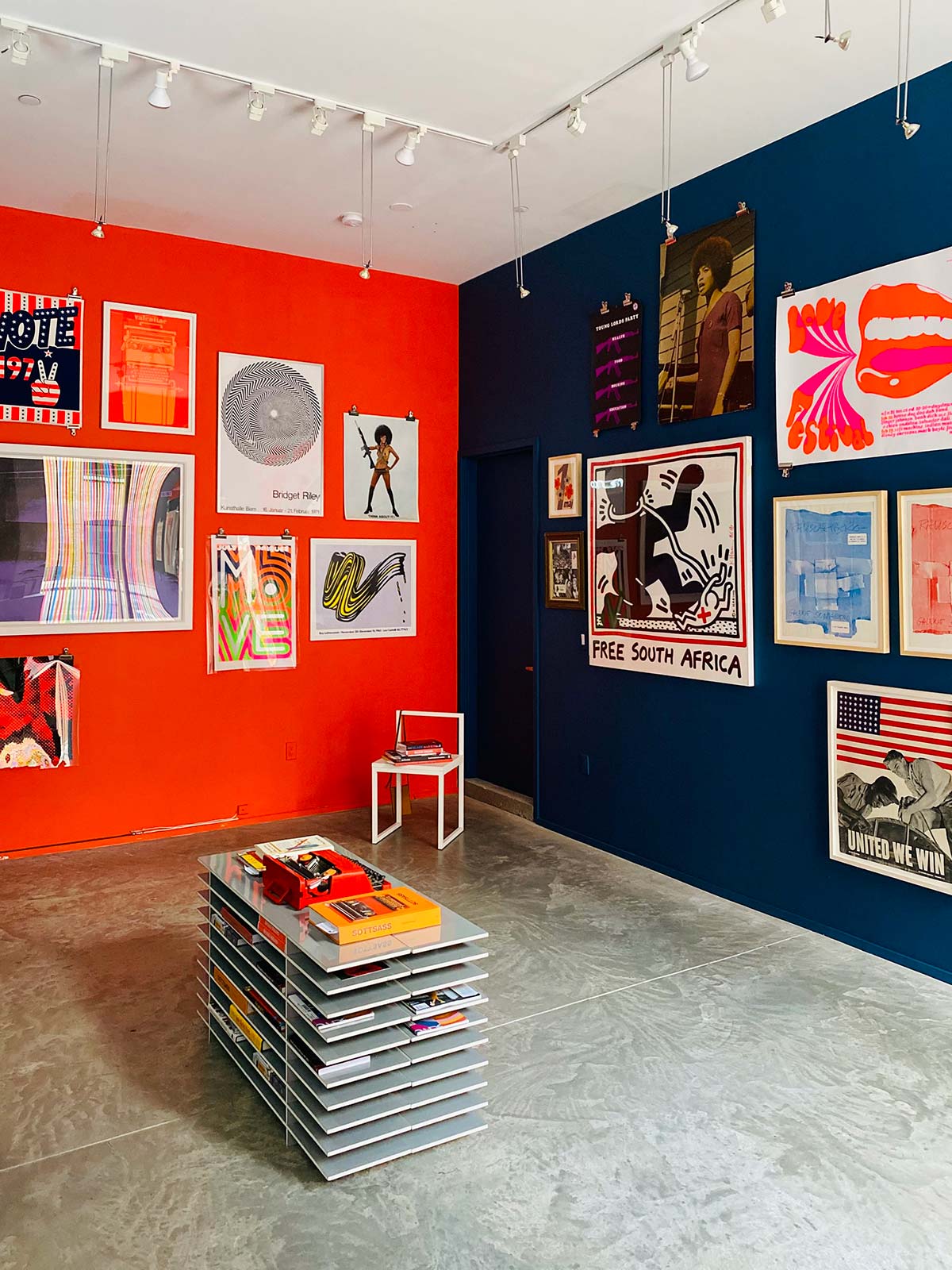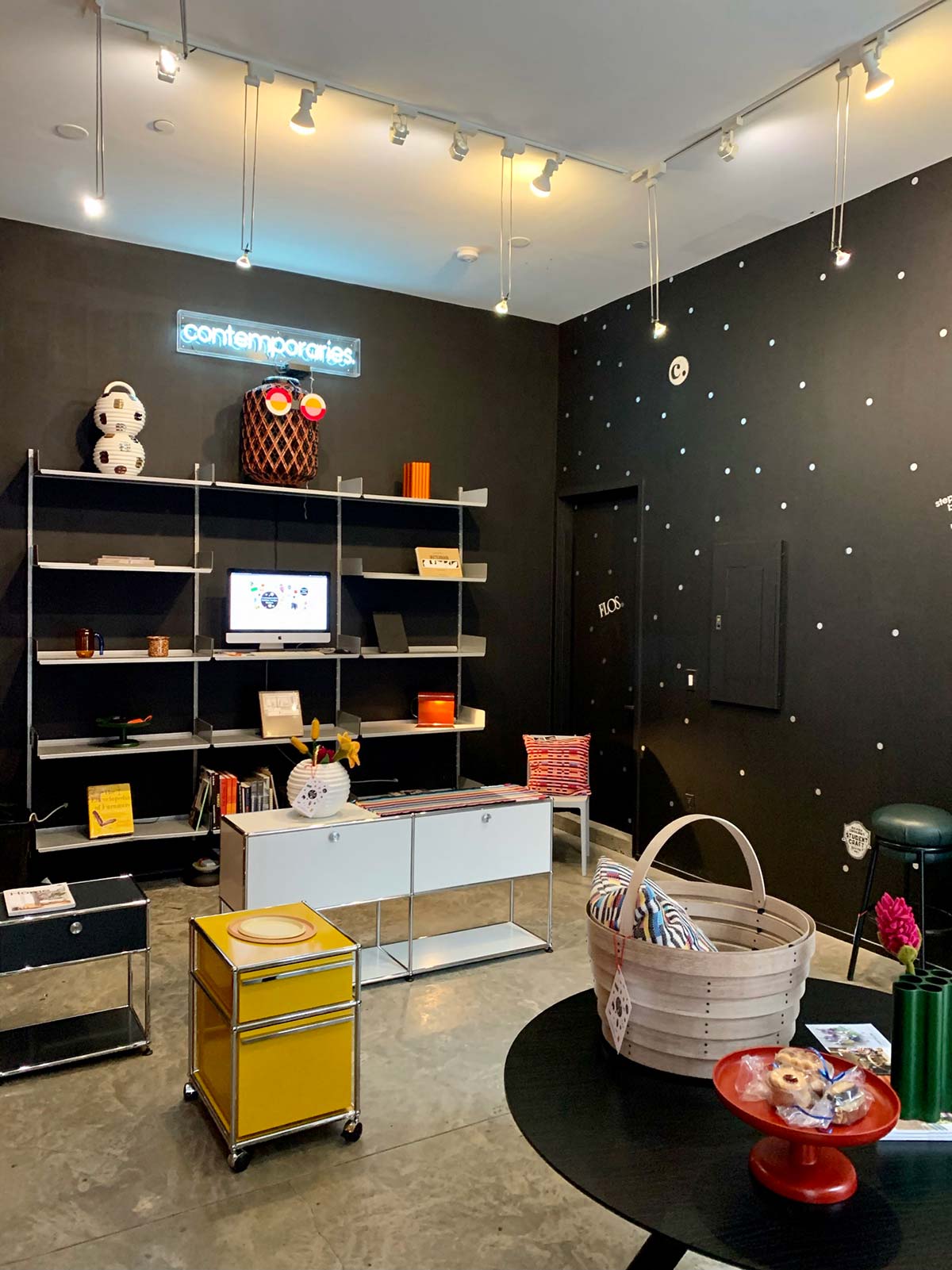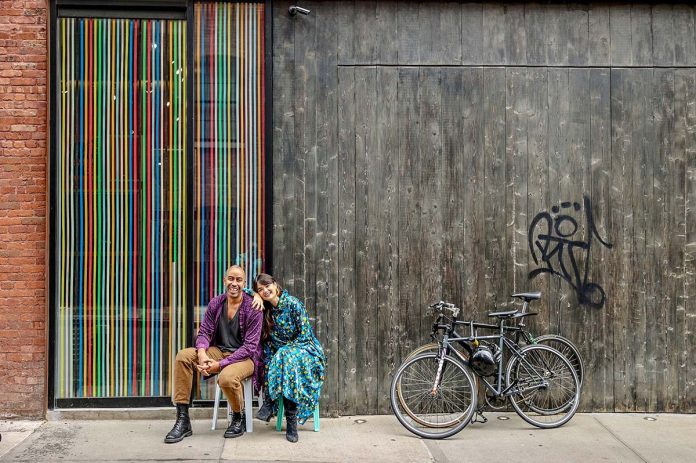Opened last October 2020 in Dumbo, Contemporaries is a storefront studio project dedicated to building creative community through design and its related fields. Since its inaugural exhibition, “A Radical Window”, which paralleled the political struggles of our present time through the art and design of the past 60 years, Contemporaries has sought to create a dialogue for why design matters more than ever. «Given where we are today as a society, we felt this strong urge to be working in a participatory and public-facing way. Contemporaries is where we go to feel connected to culture, to experience beauty, and create art in the company of our community.» Through monthly project-based activations of their 400 sq ft storefront, Stephen and Malika strongly believe in the power of culture at the street-level to breathe new life back into our urban spaces in a post-covid paradigm.
How did the idea to open a place dedicated to the imagination like Contemporaries come about?
Stephen: When we first rented the space in February, we only had time to paint the walls and put up colorful stripes before Covid hit and the city went on lockdown. For almost five months, the space lay empty as we considered how to re-engage with it. In the beginning, we imagined this location as our own studio for Stephen Burks Man Made. However, given the events that took place in the summer months, the death of George Floyd, and the Black Lives Matter protests that followed we felt the need to approach it from a more generous, community-engaged perspective.
What is the philosophy behind this innovative location?
Malika: The social isolation that we experienced as a result of sheltering in place, also extended to our urban environment – we felt physically disconnected from our city. So, in this way, having a street-facing space that we could invite people to was a gift that we wanted to share. It is important also to emphasize that local is now the new global. We lived extremely international lifestyles before this. Stephen was traveling almost once a month to Europe for work and I often visited my family which is based in Morocco and Cambodia. We were very much always on the move. But, without the reality of travel, we’ve been forced to reconsider our own city. We spent a lot of time cycling, riding the ferry, and exploring new neighborhoods by foot. In this way, we were learning to fall in love with New York again and being reminded that there is always more to discover.
S: Yes, after the volatile summer that we had, we really felt the need to do something. We spent so much time at home together, which was positive in many respects. Actually, being forced to confront our domestic lives for the first time has led us to explore new ways of living at home and how design can support these new environments. The outcomes of this investigation around sheltering in place will be part of an upcoming solo exhibition at the High Museum in Atlanta in 2022.

Why did you open in Dumbo? Do you collaborate with local artisans in the neighborhood?
M: Dumbo is one of the most beautiful neighborhoods in New York with its historic industrial architecture, the infrastructure of the Manhattan and Brooklyn bridges, and the defined water’s edge. In the 1990s it was a popular destination for artists in search of affordable studios with high ceilings and natural light. In fact, it was artists that coined the name “Dumbo”, which is an acronym for Down Under The Manhattan Bridge Overpass. Today it is one of the wealthiest neighborhoods in the city with its highest concentration of billionaires.
S: But that’s not why we opened here. We actually happened upon the space by chance when we were cycling through the neighborhood one January afternoon. Since then we’ve gotten to know the area a little better. One of our favorite spots is the Japanese cafe designed by Sou Fujimoto called Usagi. They have an amazing architecture and design book selection.
M: Speaking of books and collaboration, one of our key partners at Contemporaries is Head Hi Bookstore and Cafe located in the Navy Yard. For each new project we exhibited, they helped us curate an accompanying selection of 5-10 books, allowing us to deepen the conversation a little further. As bibliophiles, this expanding library is extremely important to us.
Could you explain the first exhibition entitled The Radical Window that you organized for the opening?
S: A Radical Window was an exhibition we curated from the archive of our friend Henrik Ansat who has a historic art and design collection called Archiviste XX. Through objects like the A.G. Fronzoni Chair, the Polaroid SX 70, alongside protest posters from the Paris 1968 student protests and the raised fist of Angela Davis we wanted to make a statement about how the times have not changed enough!
M: By calling the exhibition A Radical Window, we also hoped to inspire an outlook of opportunity filled with possibilities and imagination. The best part of this particular activation were the conversations that we were able to have with people of different backgrounds and ages about matters of political importance like the right to vote, sexuality, or racial justice.

Contemporaries is not a gallery, nor a store, nor a studio. How would you define it?
S: Contemporaries doesn’t have a distinct definition, and it’s not specifically connected to my practice Stephen Burks Man Made. Instead, its about the coming together of our two paths. This is why we like to refer to Contemporaries as a storefront studio project, which gets at the experimental nature of the whole endeavor.
M: In some ways, we prefer to leave it undefined because it means that we’re always evolving. And change is the only constant. When someone walks in the door asking us what Contemporaries is, it takes us quite some time to explain. It’s almost like trying to tell a story without a definitive ending. And I suppose that’s what makes it engaging for us.
S: Yes, this idea of not knowing is important because it gets at the spontaneity of encounters that, for me, is what New York is all about.
What are your future projects?
M: What we’ve learned from having a physical location is that the actual space is not necessary – what’s more important are our ideas and how we communicate them. I think we find ourselves in a moment where our relationships to space and to each other have been totally re-programmed. Being able to read and interpret these changes will be of utmost importance.
S: Coming up next, we’ll be partnering with some design brands as well as the NY x Design Pavilion to explore how locally-embedded design processes can pave the way for innovative design thinking of the future.

What is your dream for Contemporaries?
S & M: We hope to use Contemporaries as a cultural strategy for our post-covid urban fabric. What if Contemporaries could be a series of smaller scale interventions taking place in one neighborhood, or throughout the city, or across the globe? We hope to find like-minded partners who are asking similar questions and are open to the idea of creative collaborative experimentation.
Contemporaries. A Storefront Studio Project
192 Water Street, Brooklyn – New York







